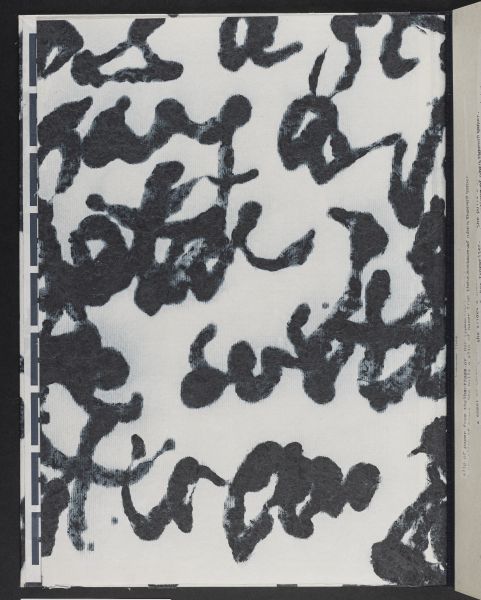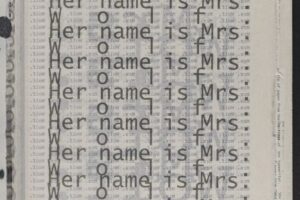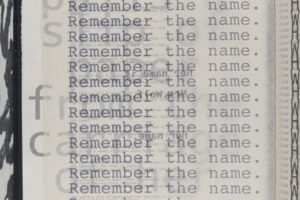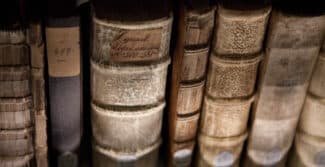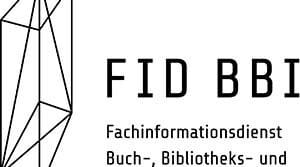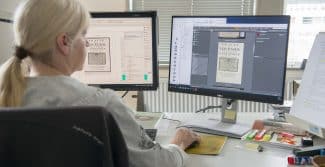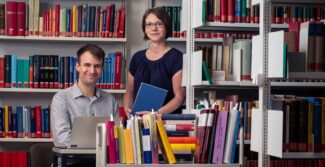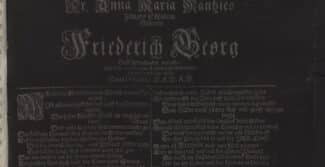20 October 2023
After all, the material determines the object, and in the case of a book it separates its internal reality from the reality of the world outside. The choice of materials should thus be regarded as just as constitutively important for the body of the book as its design, the structural sequencing of its pages and the interplay of text and image. The distinction between illustrated and text-based books shows us that matching the paper to the image is a key concern. Images have more visual impact and the details are sharper and clearer on coated paper, where the pulp, a mixture of water and fibres, is suppressed by the addition of a coating. In contrast, overly smooth paper can be distracting when the text is dominant, because it reflects light in a way that disturbs the flow of reading. If the quality of paper is sufficient in itself to have such a major influence, it is clear that the book’s material properties are a key consideration. In some cases, they can stimulate senses other than that of sight. Let’s not forget the frequent recollections of the smell produced by books in literature and pop culture which can bring hidden memories to mind – as per Marcel Proust’s much-cited account of enjoying a madeleine. It is similar with sounds, which also awaken memories and conjure up associations. And so it is hardly surprising that an artist’s book reflects on its own auditory qualities, which are in turn generated by the material.
Book space as sound space
Robbin Ami Silverberg’s book Rondo (2009), based on one of István Örkény’s One Minute Stories, is specifically designed to have an acoustic effect. In these short tales, first published in 1967, Örkény records momentary episodes from everyday life, tearing apart its banality with powerful eloquence. This is the case with the actions of the typist Mrs Wolf, whose monotony is elevated through the repetition of words into an onomatopoeic audio work, which resonates directly in Silverberg’s design. As a dramatic device running through the book, the artist selected various kinds of paper for the pages, which each make their own specific sound when turned. She echoes the repetitions typographically by extending the text over multiple pages, thereby drawing readers inexorably into the book’s sound space; before long they are captivated by the rustling and crackling of the paper more than by what is actually happening in front of their eyes. The clattering of the typewriter keys initially finds its visual equivalent in the typography, but soon it seems to have shifted entirely into the realm of the ear – all the more so when the artist gives thought to the immediate acoustic experience, inviting András Dés to undertake a sound performance using nothing more than the paper in her book. Silverberg then rounds off her work with a supplemental DVD containing this ‘soundtrack’.
Surface structure as organic space
Yet the material language certainly does not need to be expressed as sound. In the case of the artist’s book in particular, the elements of material language are far more closely connected to visual and haptic experiences. But here too the properties of the material aim to communicate something that goes beyond the obvious. Using simpler means just makes the effect all the more amazing.
This is a fruitful approach for a book devised by Frauke Otto called Der Panther (1999), after the poem by Rainer Maria Rilke – a reference that swiftly leads to notions of a bibliophile book. Which it is, in its own way, although the choice of material immediately establishes a visual break with the bibliophile tradition: traces of used teabags create a blotchy pattern, leading to a remarkable spatial effect. As one leafs through the book, this effect asserts itself more and more, countering the monotony of the pages, before ultimately yielding to the impression of movement. This sensation is triggered by a further structure that overlies the irregular tea stains, namely the edges where the individual teabags abut. They create a latticework construction behind which the panther moves to and fro. Even though the animal itself is never seen at any point, it is present in the two different overlapping structures. The bars of the cage that are effectively created by the patterning of the paper sheets become a threshold where two worlds meet without ever connecting. It is there, at the point where the material has created a sound space that expands the real space of the work, that a boundary emerges, emphasising the observer’s ambivalent role as participant in and observer of the work.
These two examples show how material can add meaning to a book’s overall message, thereby further underscoring the degree to which the individual components in an artist’s book are inextricably connected.
Title image: Robbin Ami Silverberg: Rondo (2009)
The author
Viola Hildebrand-Schat is an independent art historian. Her research is focused on the artist’s book, which she made a study of between February and May 2023 supported by a grant awarded by the State of Lower Saxony and the Herzog August Bibliothek. She also lectures as an adjunct professor at Goethe-Universität (Goethe University) in Frankfurt am Main.
More